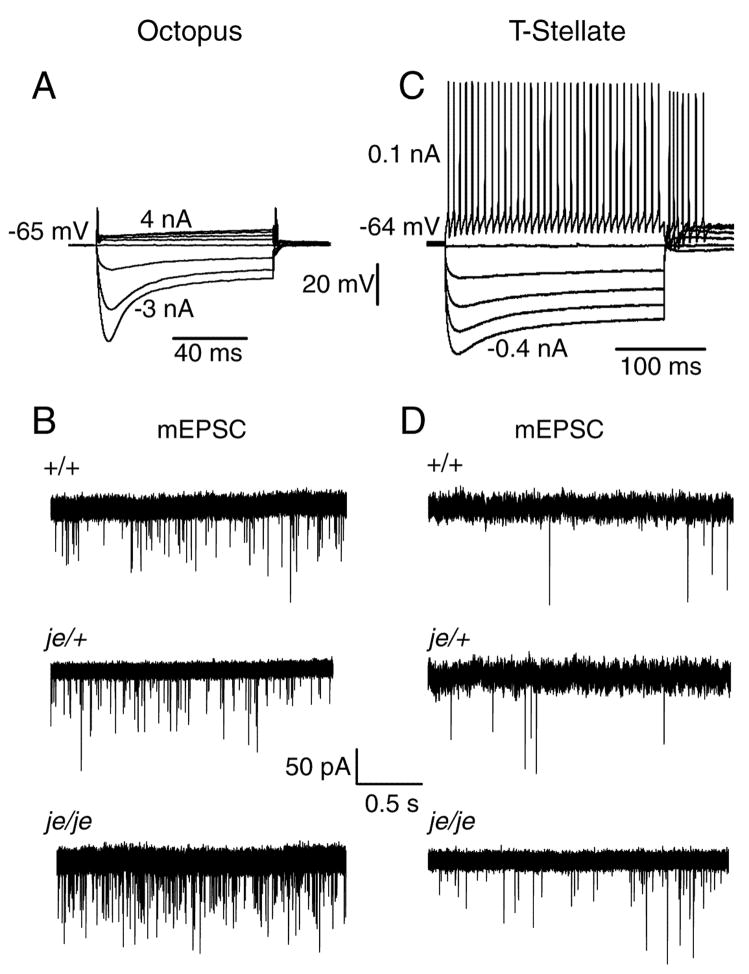Figure 4.
Spontaneous miniature excitatory postsynaptic currents (mEPSC) are more frequent in octopus and T stellate cells of deaf je/je than of hearing je/+ or wild type mice. A: Responses to current pulses identify this to be an octopus cell in a slice from a +/+ ICR mouse. Large depolarizing currents were required to bring the cell to threshold. As is typical, this octopus cell fired only once at the onset of a suprathreshold depolarizing current pulse and at the offset of hyperpolarizing pulses. B: Representative traces show examples of mEPSCs from octopus cells of +/+, je/+ and je/je mice. Cells were held near their resting membrane potential at −65 mV. C: Responses to current pulses show that small current pulses bring the cell to threshold and that depolarization evokes a train of regular action potentials that identify it to be a T stellate cell in this recording from a +/+ ICR mouse. D: In T stellate cells the frequency of mEPSC is lower than in octopus cells. Each of the traces in B and D shows a single, continuous record.

